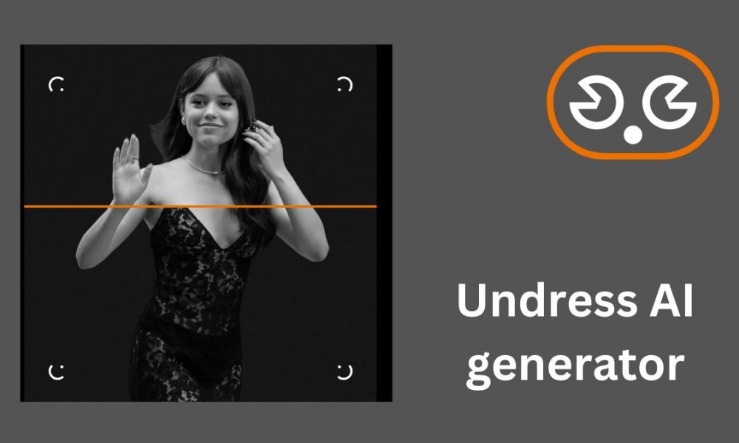The Technology Behind Synthetic Undressing
Artificial intelligence has evolved at a breathtaking pace, infiltrating various aspects of digital life. One of its most controversial applications is in the realm of image manipulation, specifically the capability to synthetically remove clothing from photographs. This technology, often grouped under terms like deepfake synthesis or generative adversarial networks (GANs), operates by training on vast datasets of human figures. These datasets contain millions of images, allowing the AI to learn the intricate patterns of human anatomy, fabric textures, and how light interacts with both. The core mechanism involves two neural networks working in opposition: one generates the altered image, while the other critiques its realism, creating a feedback loop that progressively refines the output until it is often indistinguishable from a genuine photograph.
The process does not involve a simple “erasing” of clothing. Instead, the AI algorithm predicts and generates the underlying skin and body parts based on its training. It analyzes the pose, lighting, and shadows in the original image to reconstruct what it infers should be there. This requires immense computational power and sophisticated machine learning models. As these models become more accessible, the barrier to creating such content lowers, leading to a proliferation of online tools. The rise of these platforms has made it alarmingly easy for individuals with minimal technical skill to engage in this form of digital violation, raising significant questions about the direction of consumer AI. The very fact that someone can use an undress ai tool with a few clicks demonstrates both the power and the peril of democratized artificial intelligence.
Beyond the basic function, the technology is becoming more nuanced. Some advanced systems can now account for different clothing materials, from the sheer drape of silk to the thick weave of denim, adjusting the generated skin texture and musculature accordingly. This level of detail makes the output more convincing and, consequently, more damaging. The development is not happening in a vacuum; it is a direct offshoot of legitimate research in computer vision and image inpainting, technologies used for photo restoration and creative design. This dual-use nature of AI—capable of both beneficial innovation and profound harm—is at the heart of the ethical storm surrounding its application for synthetic undressing.
The Ethical Quagmire and Legal Landscape
The emergence of ai undressing technology has thrust society into a complex ethical dilemma. At its core, this practice is a profound violation of personal autonomy and consent. Individuals, often women, find their images—sometimes taken from completely innocuous social media profiles—digitally altered without their knowledge or permission to create non-consensual intimate imagery. The psychological impact on victims is severe, encompassing trauma, anxiety, depression, and damage to personal and professional reputations. This is not a virtual harm; it has real-world consequences that can destroy lives, making it a form of digital sexual abuse.
Legally, the landscape is struggling to keep pace with the technology. Many countries lack specific legislation that directly addresses the creation and distribution of synthetically generated nude images. Existing laws concerning harassment, defamation, or privacy invasion are often applied, but they were not designed with AI-generated content in mind. This creates a significant enforcement gap. For instance, proving non-consent or intent to harm can be challenging in digital spaces where anonymity is common. Furthermore, jurisdictional issues arise when the perpetrator, the victim, and the servers hosting the content are in different countries, each with its own legal framework.
The ethical responsibility also extends to the developers and platforms that host or enable this technology. While some argue for freedom of research and technological advancement, the weaponization of their tools for harassment cannot be ignored. There is a growing call for ethical AI development frameworks that include built-in safeguards to prevent misuse. This could involve stricter age verification, watermarking of AI-generated content, or even refusing to develop such applications altogether. The debate forces a critical examination of whether some technologies are too dangerous to be unleashed on the public, regardless of their potential for legitimate use in fields like medicine or fashion.
Real-World Repercussions and Notable Incidents
The theoretical dangers of ai undressing tools have already materialized in disturbing real-world cases. One high-profile incident involved a community forum where thousands of users shared links to a specific application. They coordinated to target female celebrities, streamers, and even private individuals, creating and circulating fake nude images. This created a hostile environment where women felt unsafe existing online, knowing any photo they posted could be maliciously altered. The incident sparked public outrage and led to several platforms banning discussions and links related to such tools, though enforcement remains an ongoing challenge.
Another significant case emerged in a school setting, where a group of students used a readily available ai undressing application to create fake nudes of their female classmates. The images were shared widely within the school community, leading to severe bullying and psychological distress for the victims. The school administration and local law enforcement were initially unprepared to handle the situation, highlighting the gap between technological capability and institutional response. This case underscores how this technology is not just a threat to public figures but to ordinary people, including minors, in their everyday lives.
Beyond individual cases, the phenomenon has broader societal implications. It contributes to the normalization of digital sexual violence and reinforces harmful objectification. The ease with which these tools can be used desensitizes users to the gravity of their actions, treating the creation of non-consensual imagery as a trivial or humorous activity. This erosion of empathy is perhaps one of the most insidious effects. In response, victim advocacy groups and tech activists are pushing for stronger digital rights, including the “right to be forgotten” in the context of AI-generated content and more robust reporting mechanisms on social media platforms to quickly take down such material.




